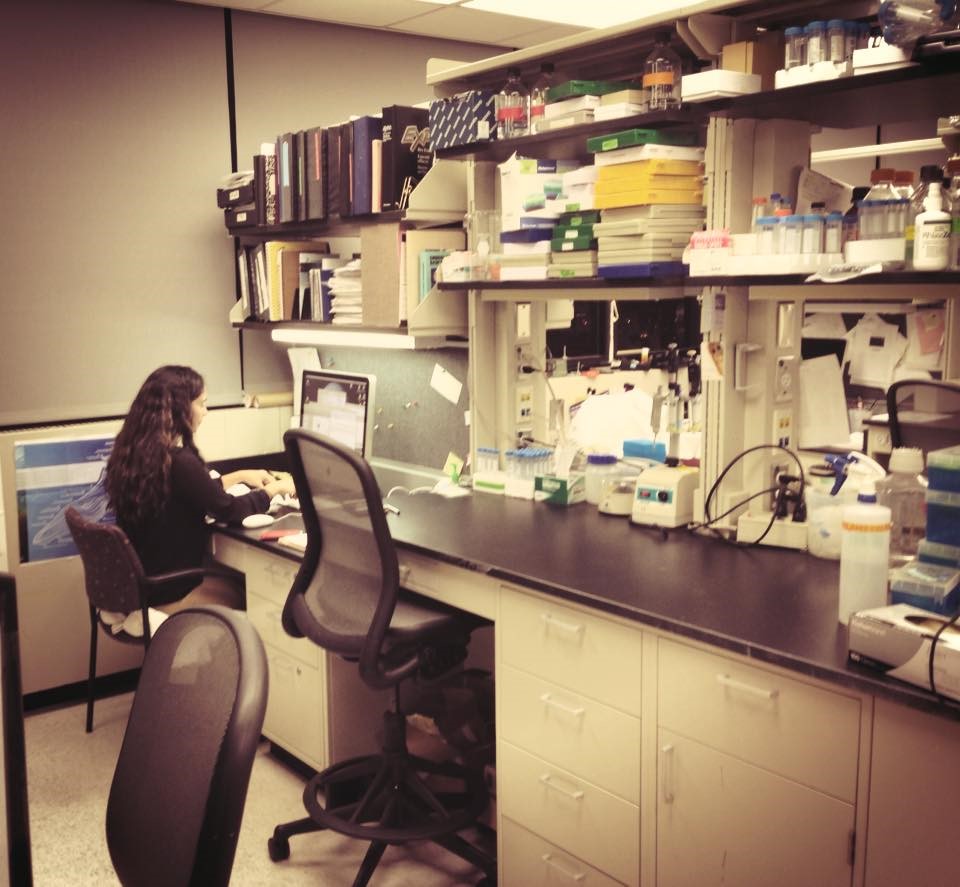Opening Ceremonies
Dr. Sosa, can you tell us a bit about what led you to do breast cancer research?
My mom was diagnosed with ER+ breast cancer 18 years ago. Two years ago, her cancer returned and she needed a second round of treatment. Fortunately, she is doing well. My personal experience with this disease greatly impacted my decision to work in this field, and inspires me every day as I work to make an impact in breast cancer research.

On the Route
Since we’ve got some time, could you tell us a bit about your current research?
Metastasis (or the spread of breast cancer to other organs) is what kills people with breast cancer. My research is aimed to avoid metastasis before it even begins by targeting the “seeds” of those metastases. These seeds are named DCC (disseminated cancer cells) and are “asleep” in the body, and can be found in important organs like the liver and bones even before a primary tumor is detected. But something causes them to wake up and become aggressive. I believe if we can figure out how these DCCs behave and spread, we might find strategies to eliminate them before they reactivate and form metastases.
At Camp
Now that we’ve made it “home” for the night and are enjoying the support of our crew, can you tell us about how your work would be affected without Komen funding?
Komen funding is imperative to my research. With Komen’s support, I can look for ways to keep these dangerous DCCs “asleep” so they can’t grow and become metastatic tumors. It also allows us to find ways to eliminate DCCs while sleeping. My hope is that this work could someday lead to a cure for metastatic breast cancer.

Day 2
What would you say to somebody who’s just been diagnosed with breast cancer?
My advice to people would be to have hope and be diligent about your own care. People with no sign of breast cancer should continue to follow-up with their doctor, follow the doctor’s recommendations, and continue to get screened every six to 12 months after treatment has stopped. It was a follow-up screening that helped my mom detect her breast cancer recurrence early. Typically, after a person is treated for breast cancer they are considered to have no sign of breast cancer. However, some people may have DCCs in vital organs that are “asleep.” They could stay like that for years — even decades in the case of ER+ BRCA patients — so it’s important to understand that risk and be proactive about screening. Early detection and follow-up could save the life of a person with no evidence of disease.
Cheering Station
Look at all of these enthusiastic supporters out along the route! Tell us about how you are involved with Komen outside of the lab.
I’m excited to be one of four Komen-funded grantees selected for the Metastatic Breast Cancer (MBC) Research Grant crowdfunding opportunity, where anyone can donate funds to support a research project or researcher of their choice. You can learn more about my story on the Komen Facebook page and donate directly to my Komen-funded MBC research project here!

Closing Ceremonies
Thanks for walking with us, Dr. Sosa. One final question, in working with patient advocates, how have they impacted your research by bringing the patient perspective?
Sandra Spivey is the patient advocate for my grant, and was so helpful in developing the Letter of Intent and grant proposal. She is very supportive, giving me feedback on how to highlight the patient perspective. I was amazed by her energy and passion. Even when she got sick, she kept working and sending me comments for this grant. I really appreciate all her help, and I am sure she will have a positive impact on my research.
Dr. Maria Sosa is an Assistant Professor at Icahn School of Medicine at Mount Sinai and you can donate to her research project directly through Komen’s crowd funding web page. Since 1982, Susan G. Komen has funded $956 million in breast cancer research, second only to the U.S. government and more than any other nonprofit in the world. Learn more here.
Pit Stop
Three things to know about Dr. Sosa:
- I like dancing. And as an Argentinean woman, I dance tango!
- In my free time, I love to paint
- My family enjoys being outside and being active — doing things like hiking, kayaking, and swimming.

Grab and Go
Here are three ways you can use this information to help reach your 3-Day fundraising or recruiting goals:
Sample Tweet:
Having seen the effects of breast cancer in her own family, Dr. Maria Soledad Sosa is now conducting research aimed to avoid breast cancer metastasis before it even begins! Learn more about her research here:
Sample Facebook Post:
Having seen the effects of breast cancer in her own family, Dr. Maria Soledad Sosa is now conducting research aimed to avoid breast cancer metastasis before it even begins! Komen funding has been imperative to her research, and she hopes to one day find the cure for metastatic breast cancer! Learn more about her work here:


 Angela also credits Shelly as her rock, even from states away.
Angela also credits Shelly as her rock, even from states away.




